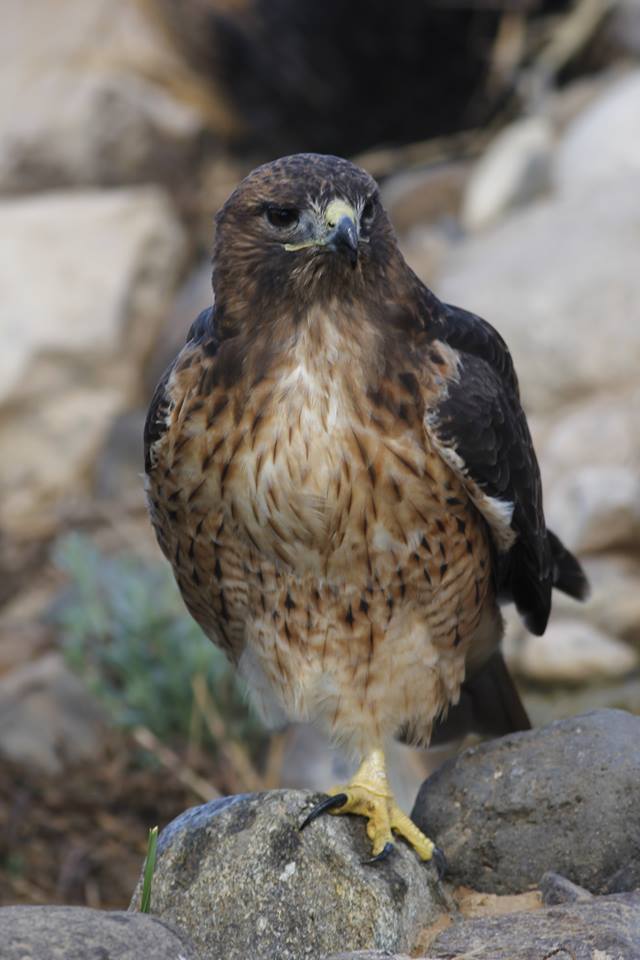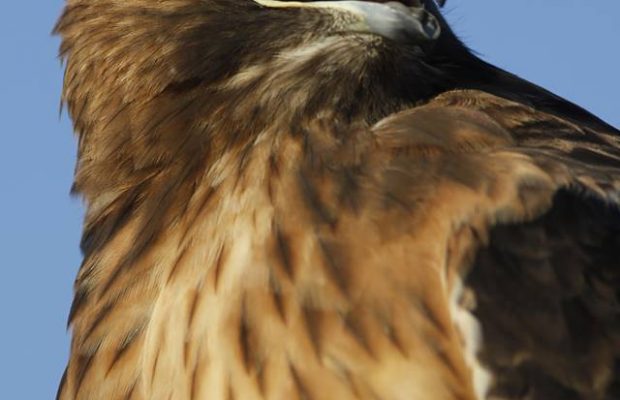Pancho, a red tailed hawk residing at the Pinacate Biosphere Reserve who has become a friend to Pinacate staff, is a visiting “intruder” that may be spotted roaming the skies of the Desert of Altar as easily as entering the office to pull at computer cables.
Rescued two years ago by the Puerto Peñasco Fire Department, and then turned over to staff at the Pinacate Reserve, Pancho already showed signs of having been domesticated which is what makes it easy for him to come up to people, and even invade work spaces such as the main office. He’s also been known to climb atop desks and pose on the forearms of visitors at times.
Pancho, a bird with a strong presence and gaze, has come to stay, describes Horacio Ortega Morales, Deputy Director of the National Commission of Natural Protected Areas (CONANP) at the Reserve. Though Pancho may disappear for a few weeks, he always comes back, strong and hungry for “anything that moves”, such as snakes, frogs, and small rodents, explains Ortega. Ortega himself has had the opportunity to coexist with the almost pet on various occasions.
“His is free. We see him around the station, he goes but he comes back. We’ve seen him on the flagpole at the entry, much like representing the symbol on the flag itself,” details the Pinacate Deputy Director.
Although they cannot precisely pinpoint Pancho’s age, based on his feathers he is believed to have been an adult bird since his arrival two years ago. Red tailed hawks can live up to 20 years in captivity and 10 when they are free.
Among the anecdotes about Pancho, Horacio remarks once the bird brought a “girlfriend” along with him, who stayed for several days at the Reserve and then one day took off. “Maybe she didn’t like the nest where Pancho lived, which was a water tank, and she would slip, but who knows,” he retells.
“He also shows up when he sees us with bags from “Ley” (supermarket), as he knows we have food,” jokingly adds Ortega.
Mike Grageda, Director of Natural Resources at the Biosphere Reserve, who has also been a close friend of Pancho’s, stressed the species is only one of dozens of birds that reside in this desert. These include falcons, eagles, raptors, owls, and mountain plover (chorlito llanero), though hawks are the most common, who are all free and wild.
“We have seen Pancho defend himself against crows several times, as well as eat frogs – which are toxic – plus he eats the “juancitos” (small prairie dogs) – there used to be a lot at the entrance but not anymore,” details Grageda.
It’s interesting to note the image of the hawk, as well as the falcon and eagle, are used as insignia on patriotic symbols as well as on logos for security institutions, given the reference of power and strength these birds represent.


